FIZKULT-RESPECT
(Dedicated to my father Gankevich Nikolai Mikhailovich)
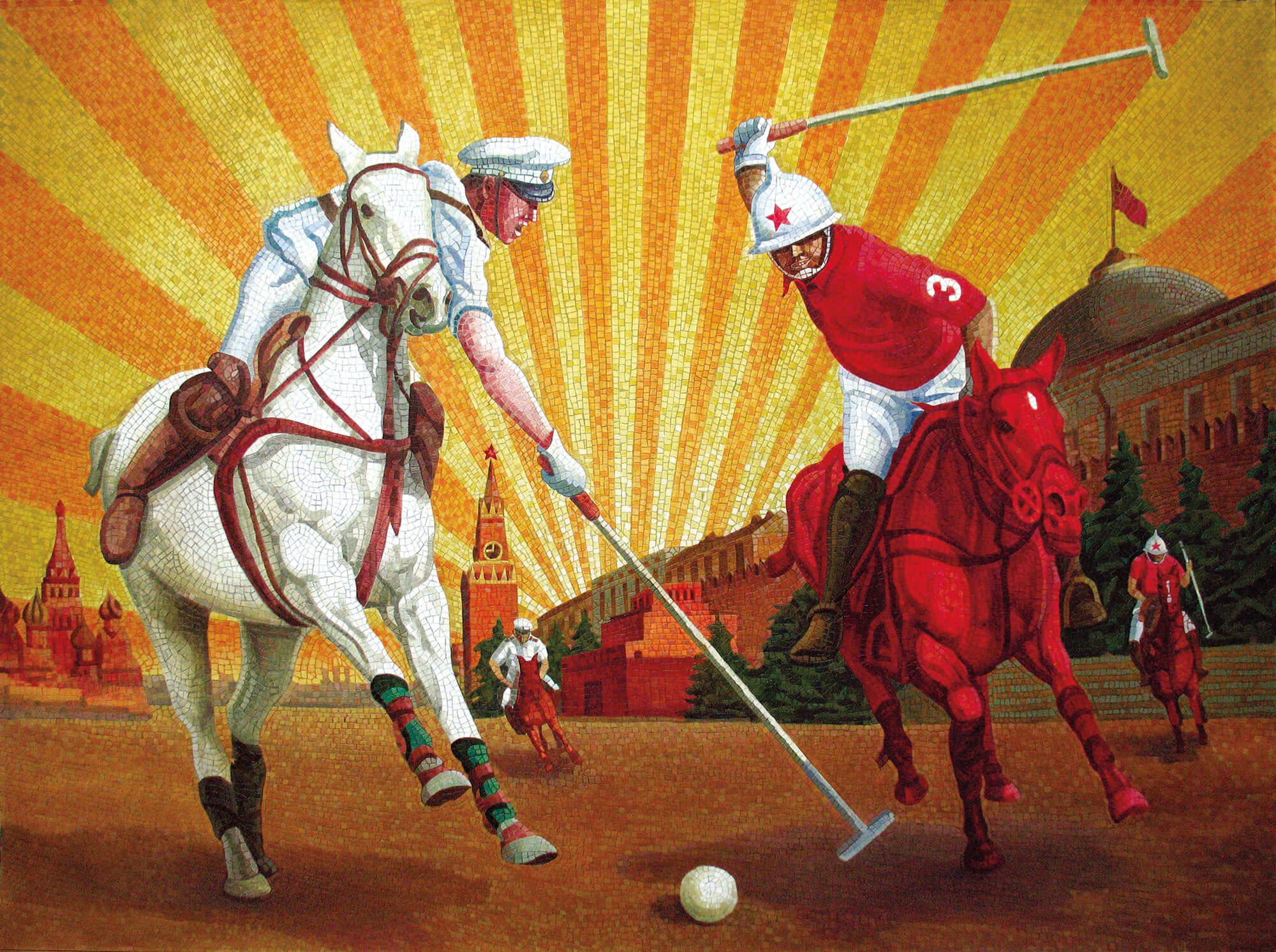
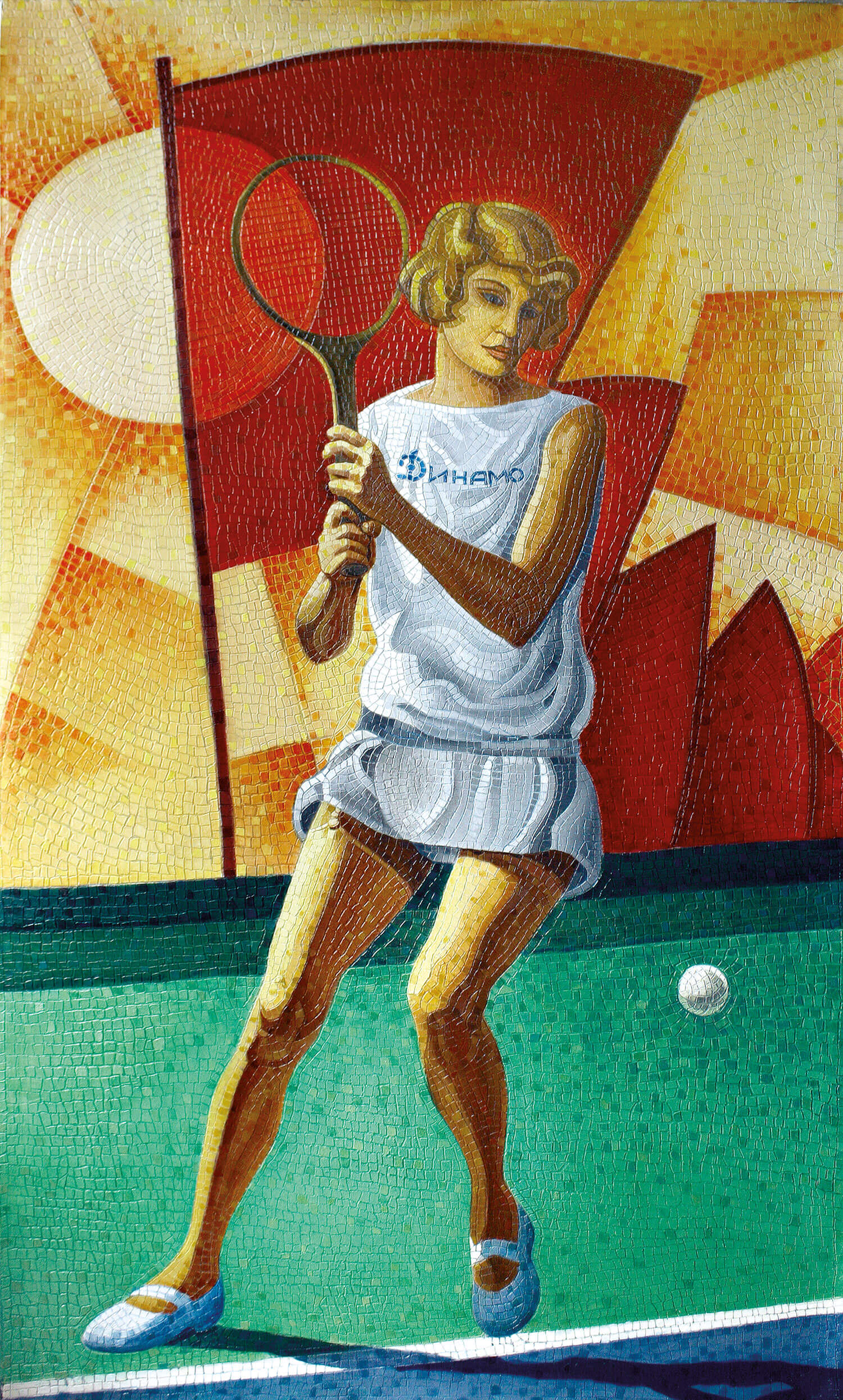
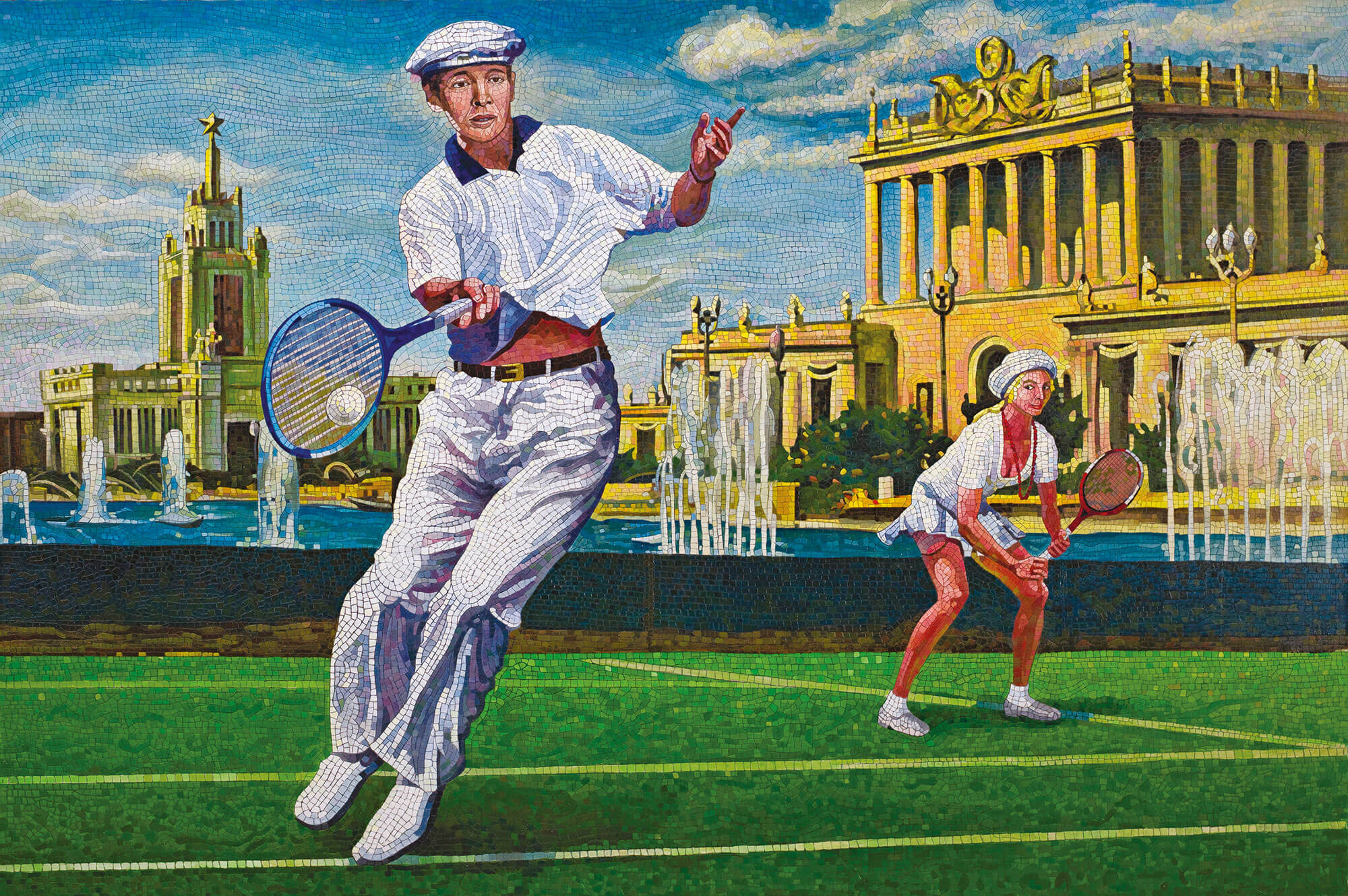


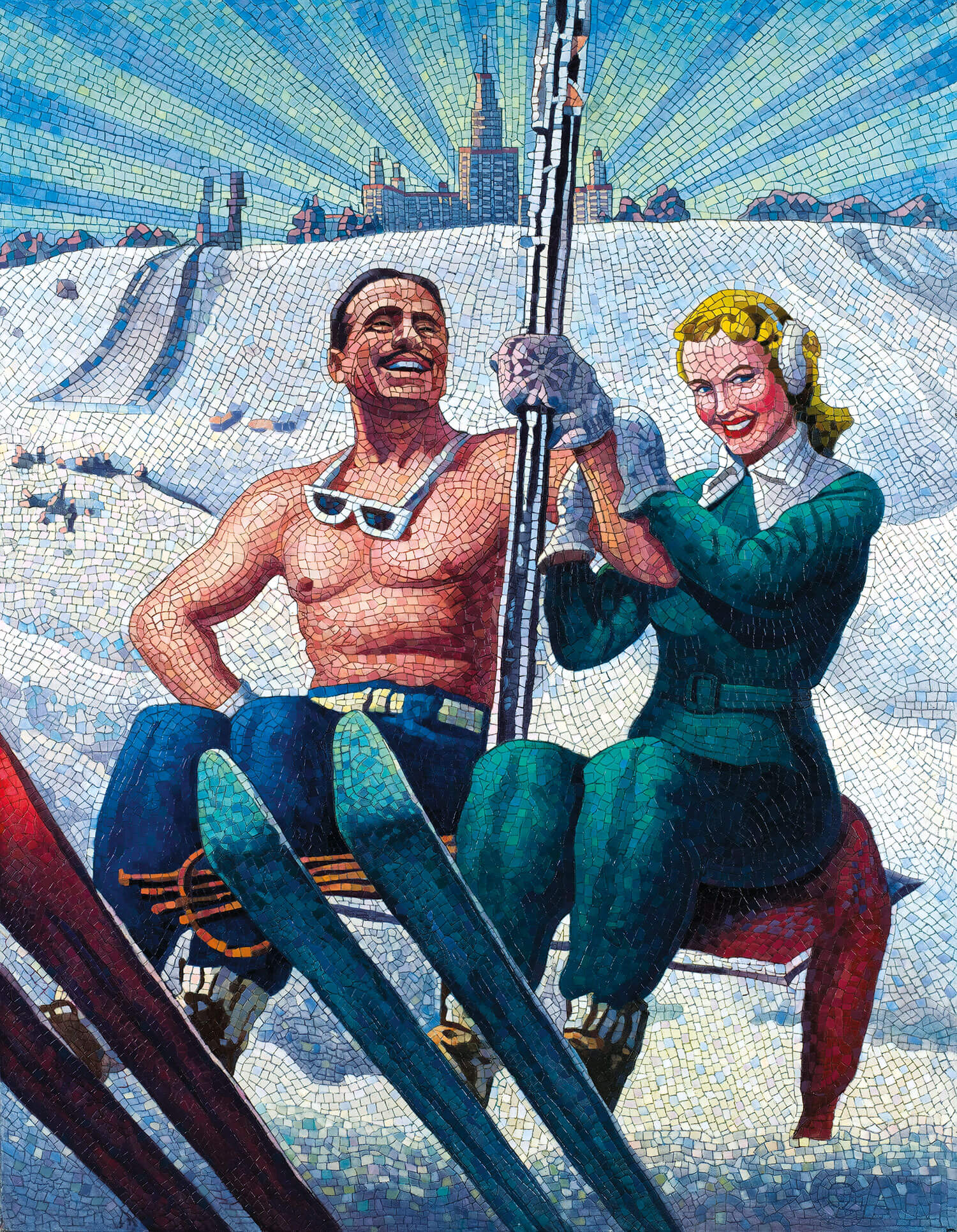
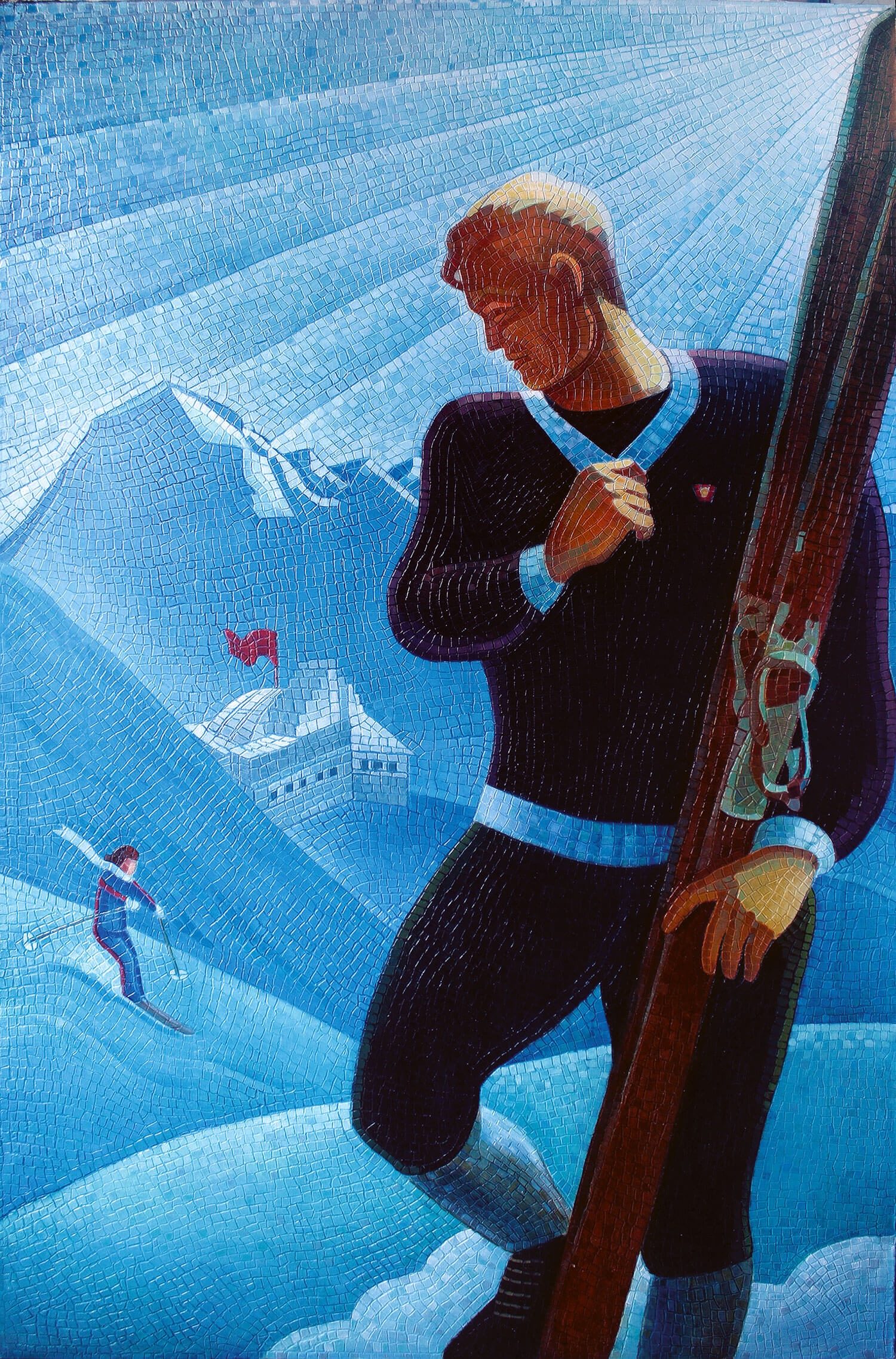

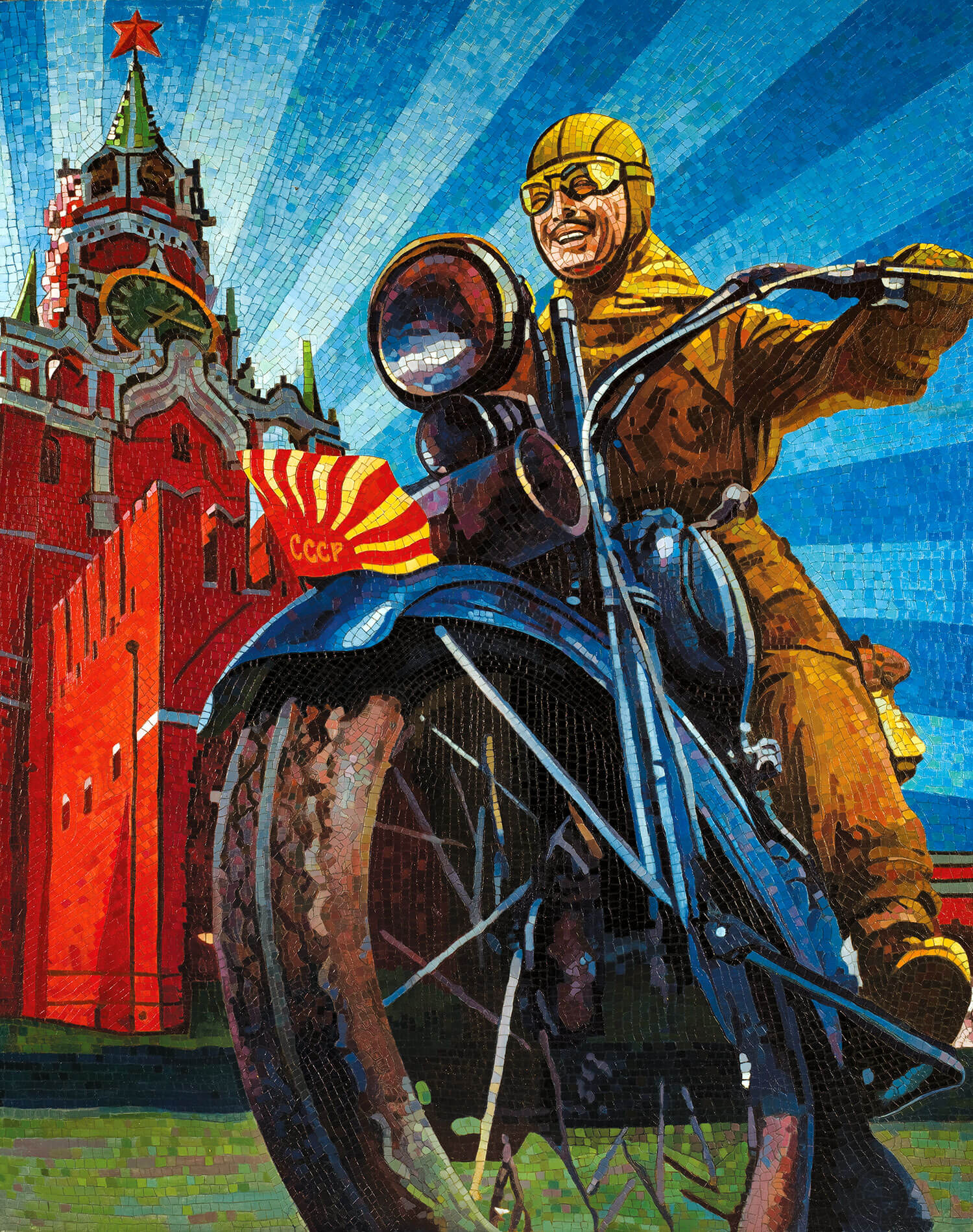
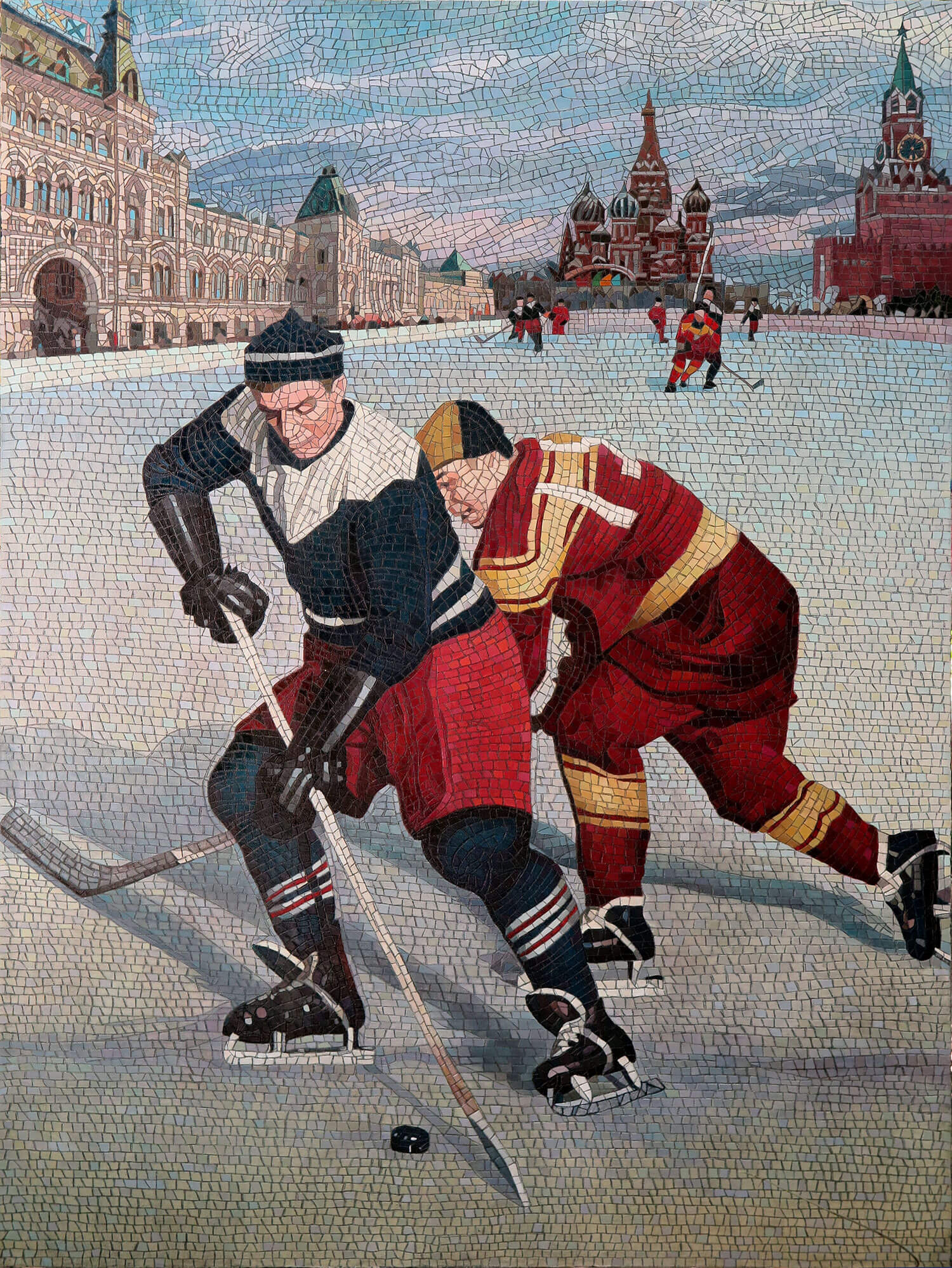
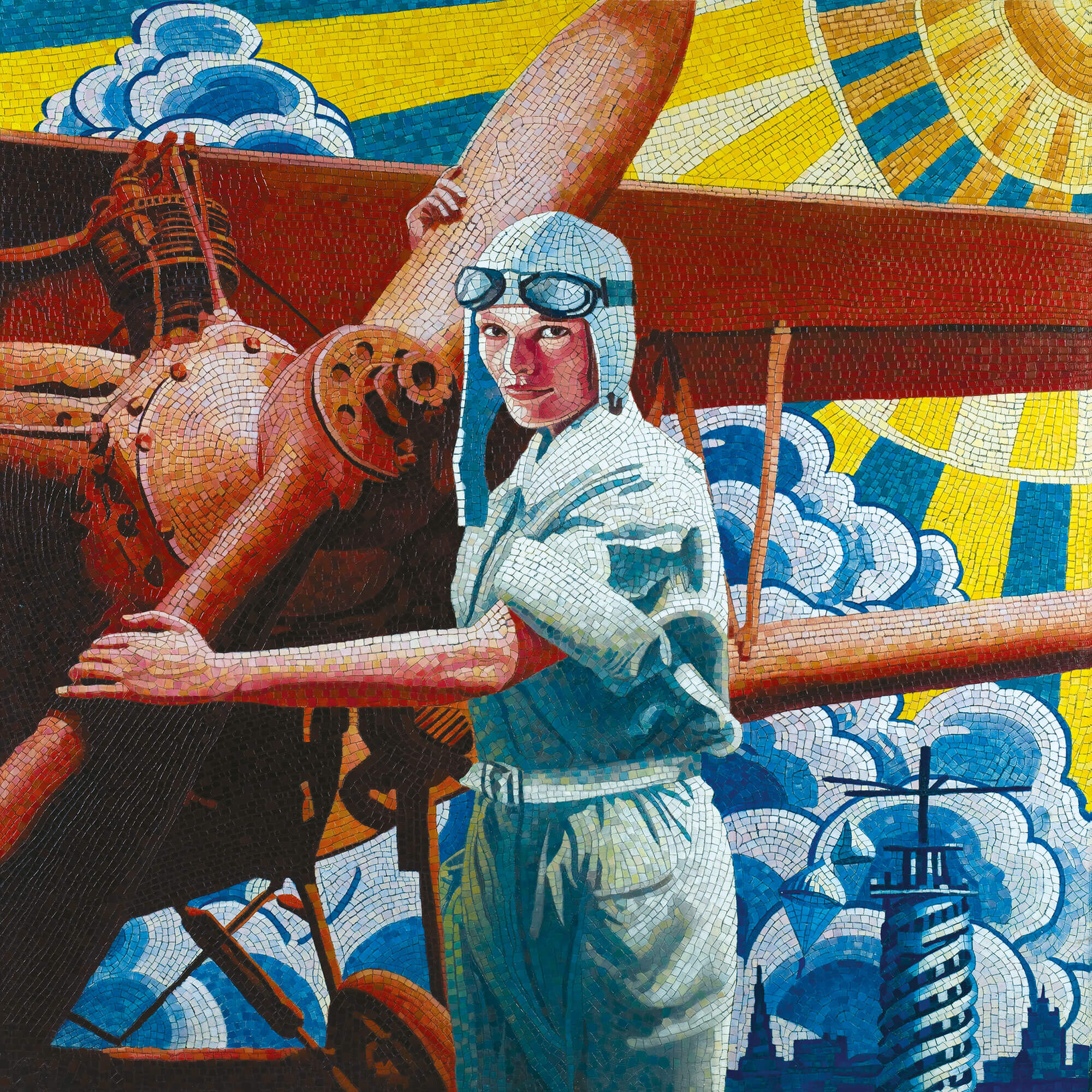
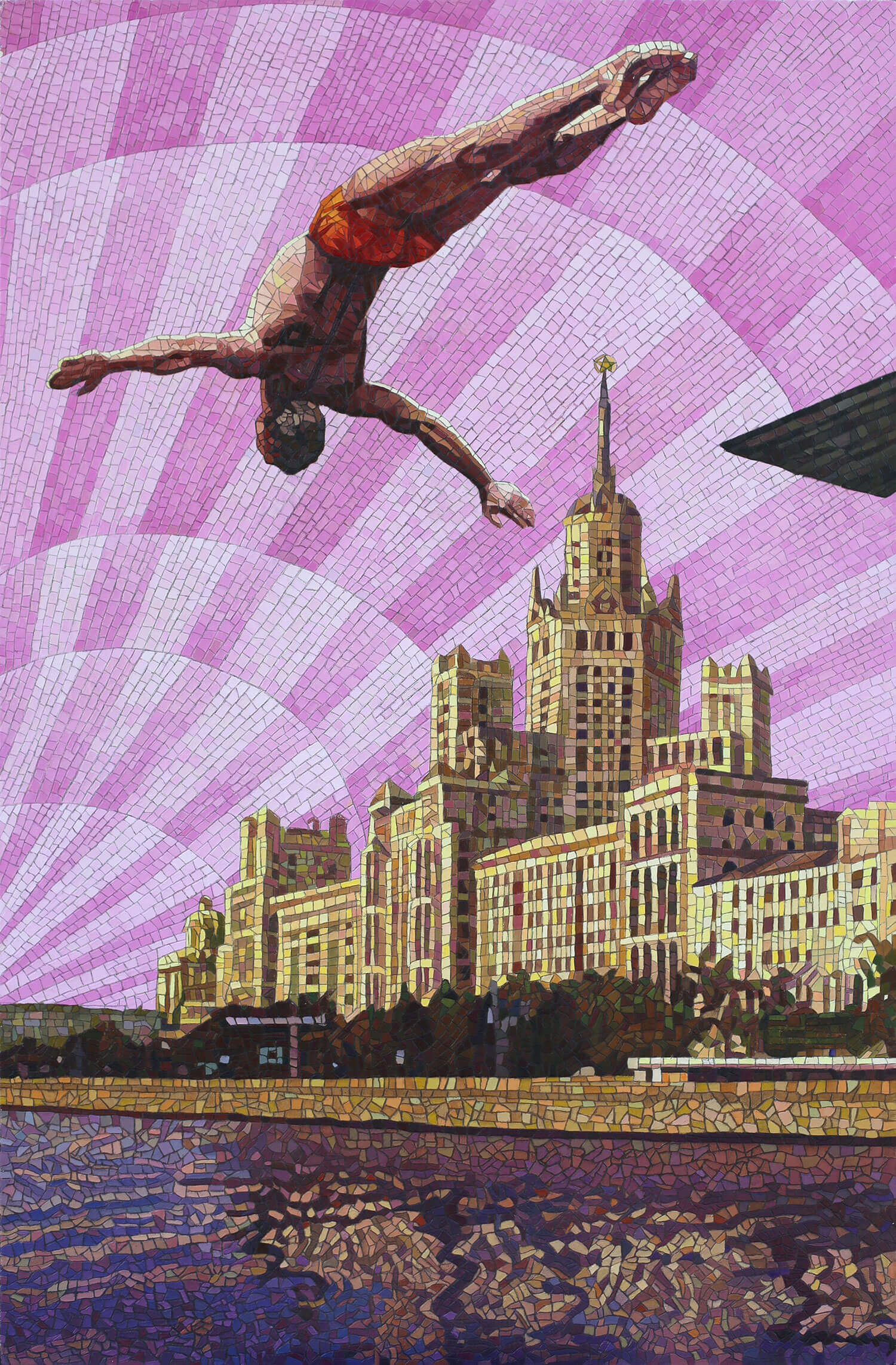
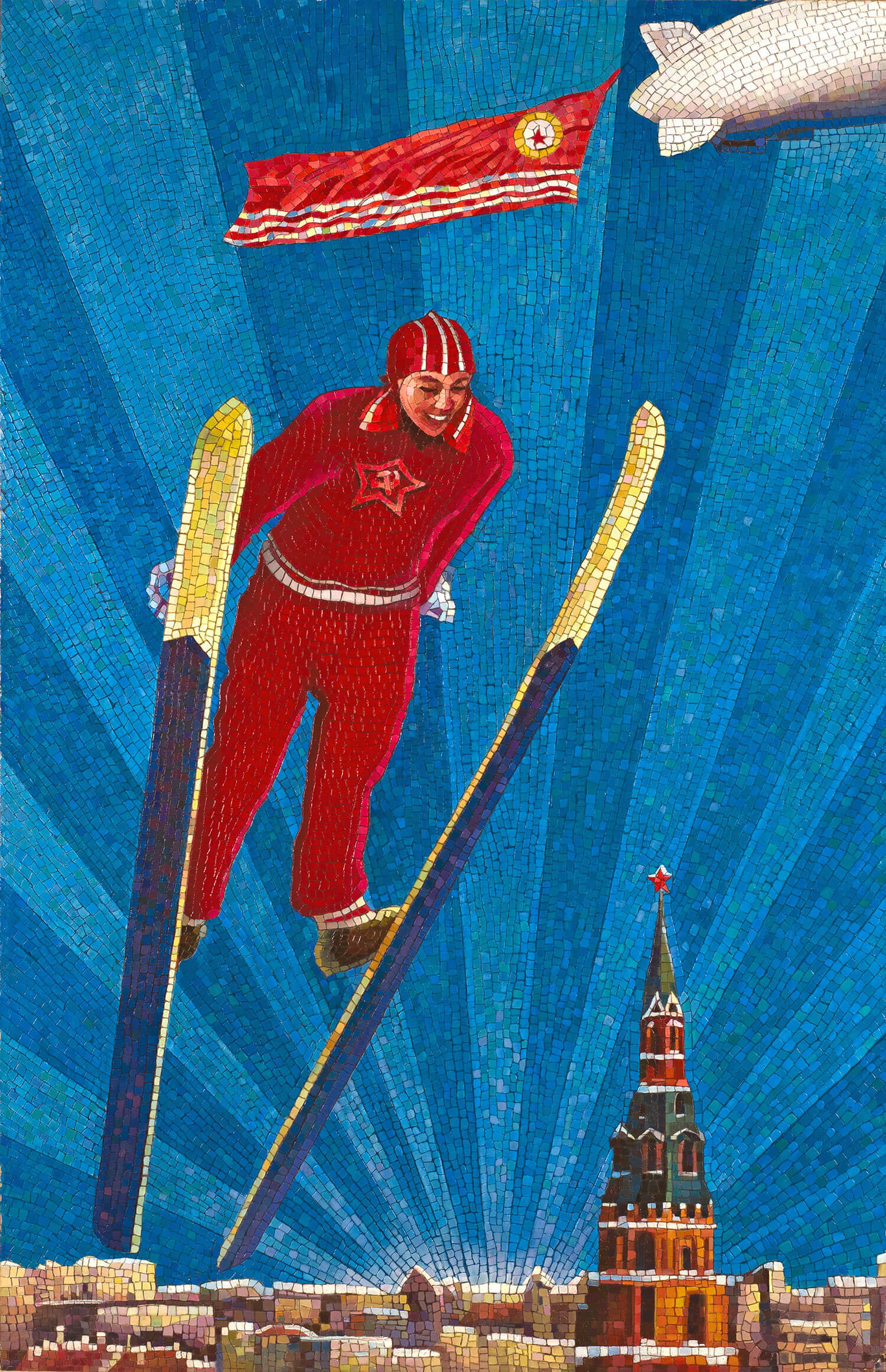

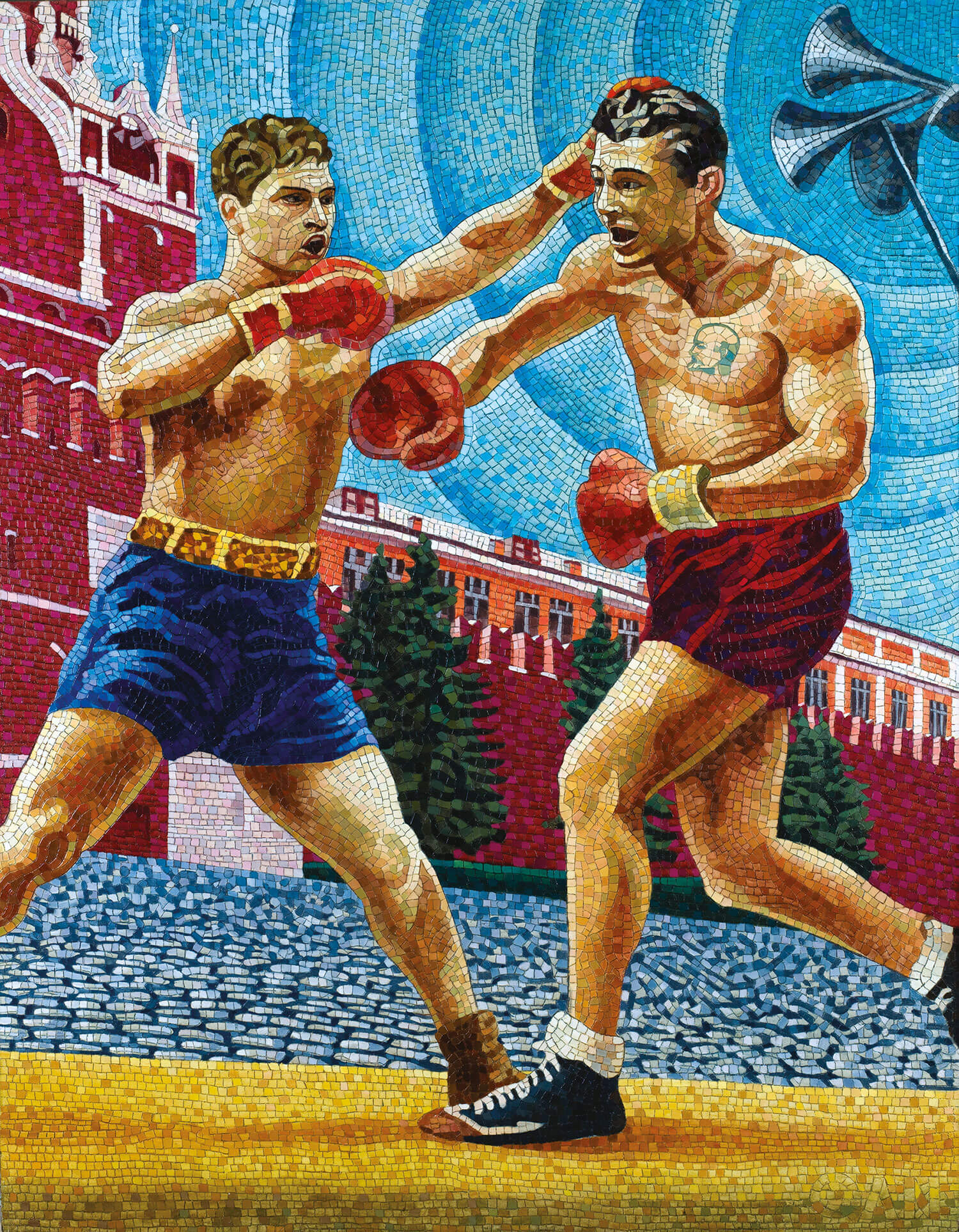

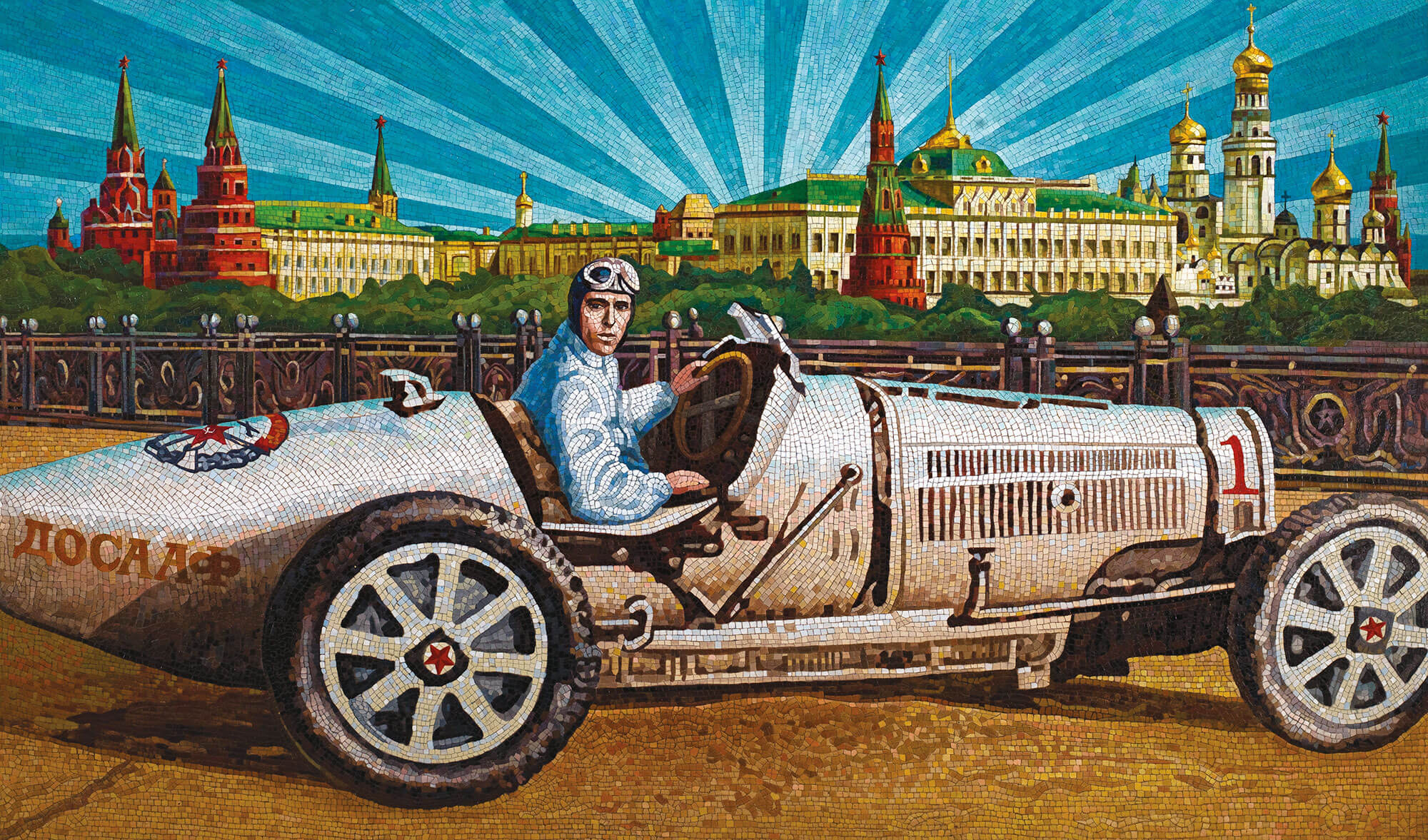
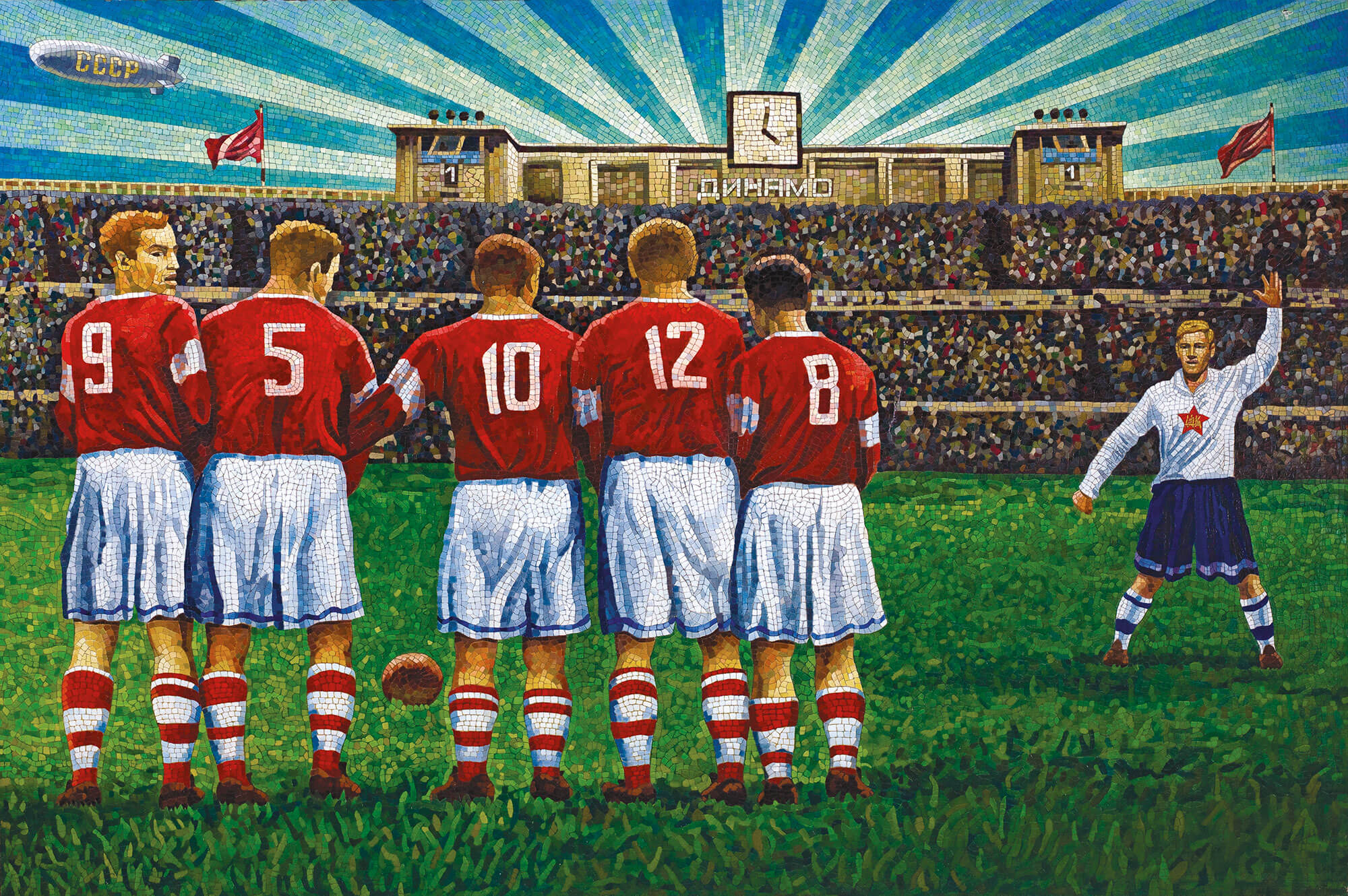
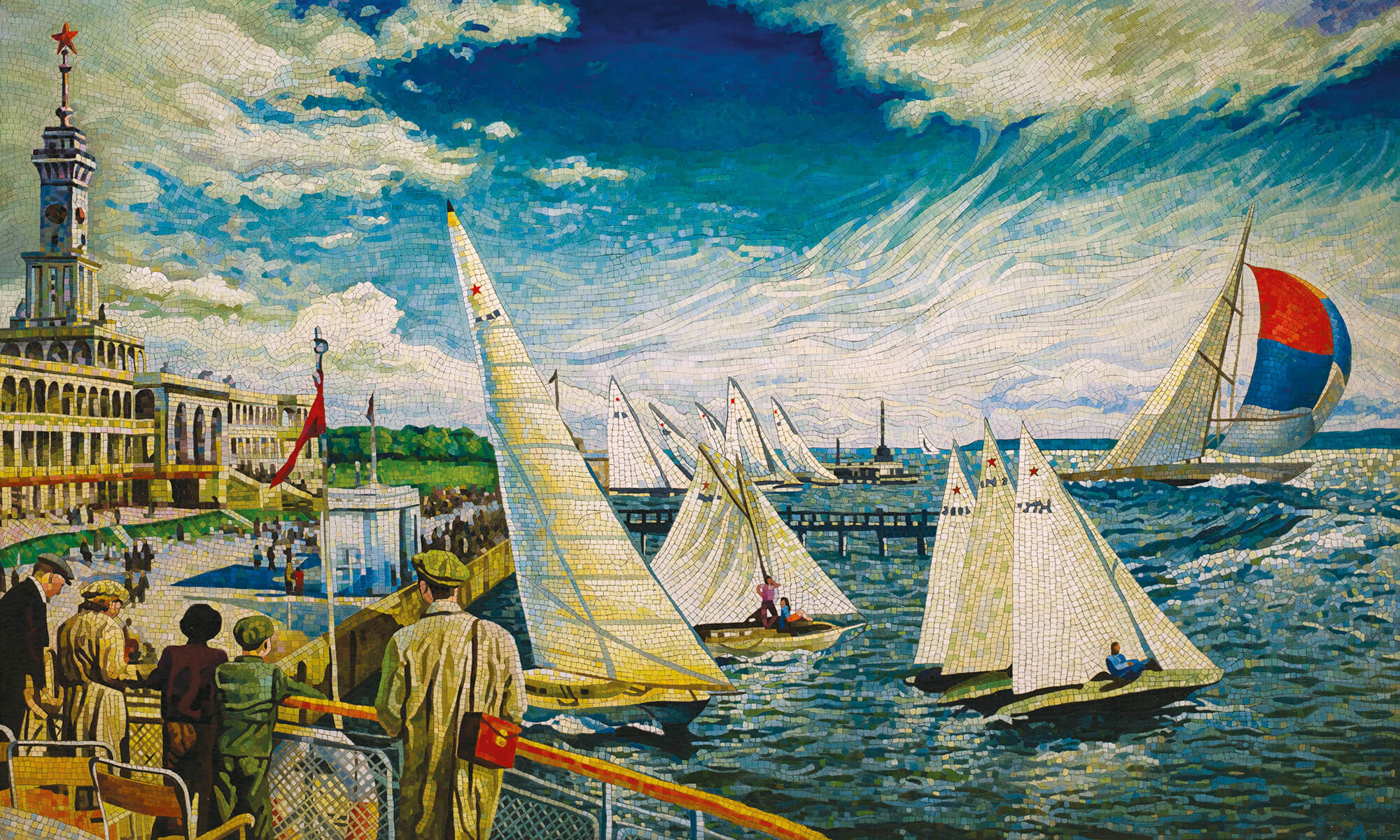
NEP DOESN’T END
When the bus
drives
through the dust,
passing wax-like chapels,
I can see them clearly –
two of them,
there’s two of them in Moscow –
Moscows.
(“Two Moscows” by V. Mayakovsky)
A city, which stands at the crossroads of the past and the future – this was how Mayakovsky saw Moscow in 1926. A crowded, “old deaf woman”, where the “mat of the pawn” is expanding, and at the same time a completely new space is being built – another Moscow, a futuristic Stalin utopia, in which there is no place for an ordinary person from the past. And exactly to that second Moscow, and the esthetics of the early Soviet futurological optimism, the new project of Anatoly Gankevich “Fizcult-Respeckt” is devoted to.
A new series of large-format paintings is painstakingly made in the traditional for Gankevich art technique of mosaic imitation. In addition, in this exact series that pseudo-mosaic texture, referring to the classics of world sacred art, is as appropriate as possible. The new works of Gankevich are “fizcult-privet” to the esthetics of the early Soviet “spaces of rejoicing”, successfully described by Mikhail Rykin in the same-named essay. The new picturesque series by Anatoly Gankevich is a real set of quotations from the history of art of the 20th and the 30th centuries. It makes us remember the classic of the genre – the bright monumental mosaics of the Moscow metro, this communist temple-like complex, anticipating the coming happy and unbothered Tomorrow; utopian monumentalism of the VDNKh, happy faces smiling from the posters of early Soviet time and all the endless optimism of post-revolutionary culture, which has not yet managed to completely digest the avant-garde, survive the 1937 and proclaim a course for the triumph of bureaucracy and gerontophilia. In this utopian city, illustrated by Gankevich, perhaps, still live Chuk and Gek, somewhere here Timur collects his team, it is here, where all the favorite Soviet films take place – this mirrored side of totalitarianism, the ideal city of Giants, the dream, which is still feels so acutely in the Moscow architecture and monumental art of the Stalin period.
Anatoly Gankevich’s artworks are left without the typical for modern art social pathos – the artist deliberately immerses the viewer into the utopian space, dwells him with a fairy tale about the city that didn’t exist. In his traditionally pan-esthetic work, Gankevich is far from a critical position. He prefers to feed the viewer with a positive cocktail from the elements of modern culture and the era of the rebirth of the Russian avant-garde into socialist realism. “The USSR is the birthplace of my dreams” – once Ryklin said. In Gankevich’s “beyond time” sleep, Nabokov and his beloved Lolita play tennis on the VDNH lawn, Mayakovsky carries a stick for the “bourgeois” golf on the Red Square, races on the racetrome are accompanied by a synchronous parade of air bombers, and all of the space in the paintings is lit up with not usual Moscow-bright, life-affirming light, distinctive for the artworks of early social realists, inspired by the idea of a bright communist future – such as Alexander Deineka.